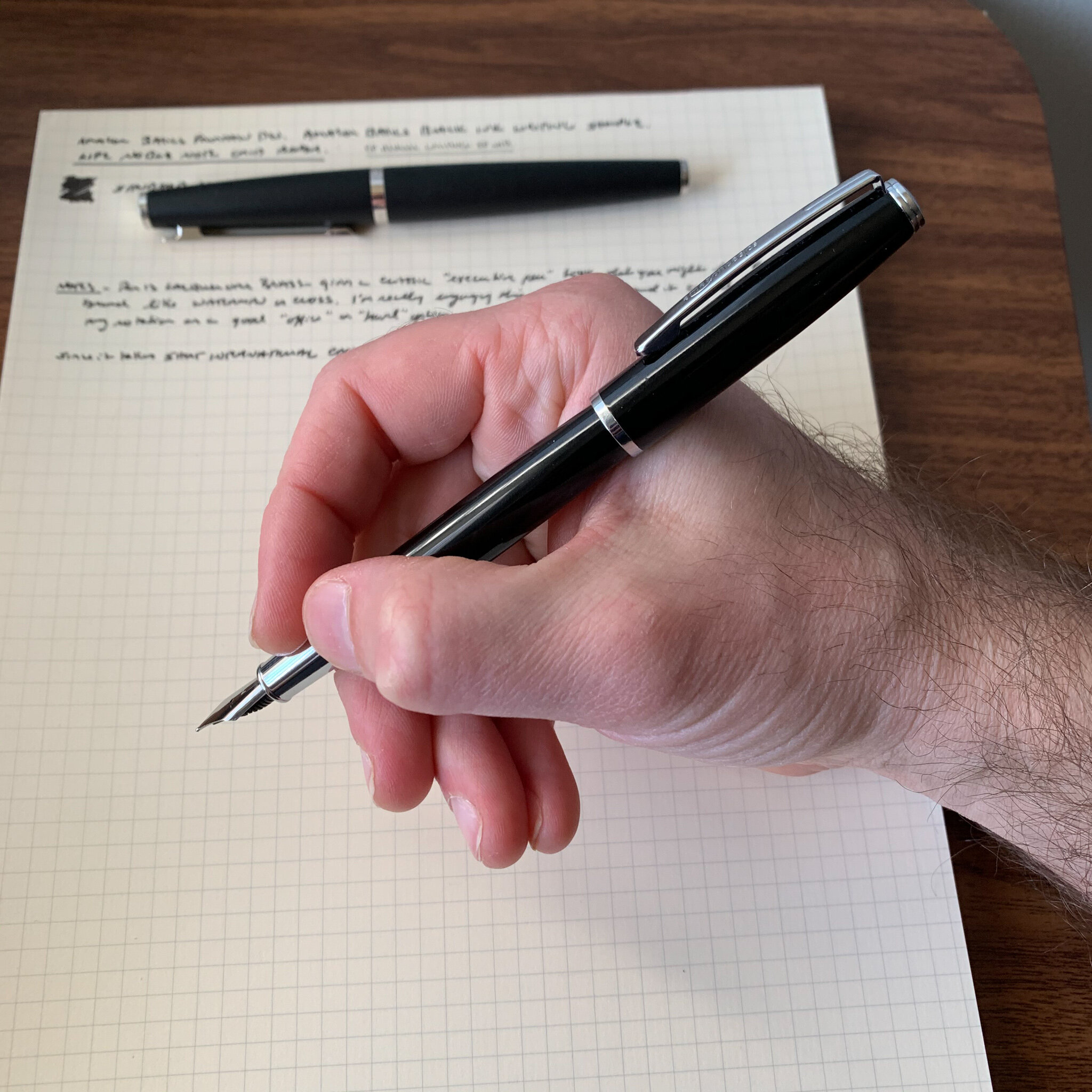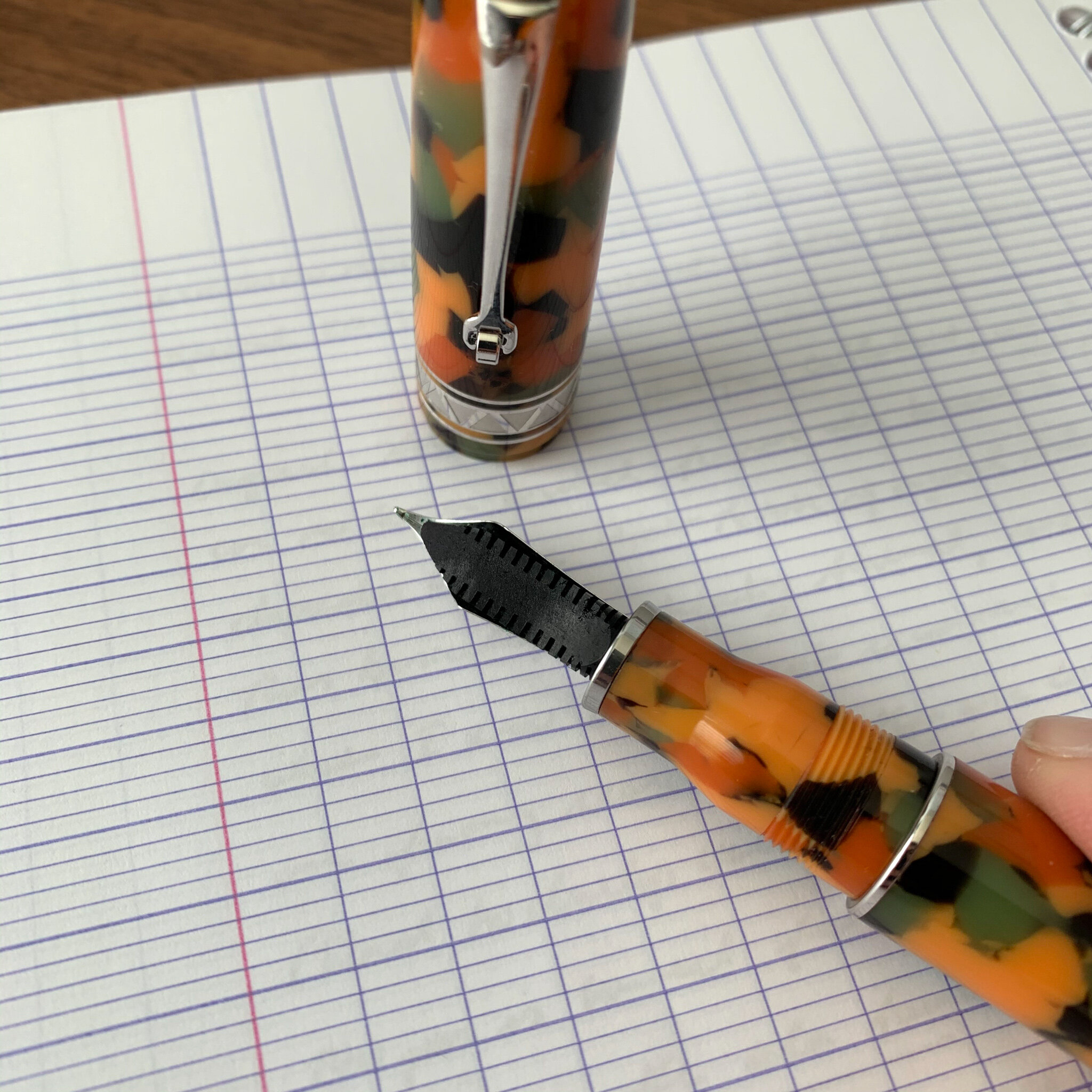As something of an Amazon junkie, I couldn’t help but place an order for the AmazonBasics “Refillable Fountain Pen” after reading Evan’s review over at The Penquisition. His take on this pen is consistent with my own: Amazon has created (or more likely, sourced) an excellent inexpensive fountain pen that deserves consideration as a “First Fountain Pen” recommendation for new users, or as an inexpensive cartridge pen to leave at the office or keep in your travel bag.
The packaging includes a nice presentation box for a $10 pen, so if you’re looking for an inexpensive gift to give someone potentially interested in fountain pens without dropping a ton of money. The pen does not ship with a converter, and I’ve only tested with the short international cartridges that ship in the box. I would expect a converter would work, though you may have to try a few sizes. The pen barrel is fairly narrow.
Design and Build Quality
Look, this pen won’t win any design awards, but for what I paid I’m more than happy with the somewhat generic lacquered brass body with chrome trim, and I’ll even forgive the “AmazonBasics” branding stamped on the clip. Frankly, if Amazon had foregone the latter, this could easily pass to the casual observer as a Cross or Waterman pen that sells for $100 plus.
The AmazonBasics fountain pen features a classic shape and design, sort of similar to my Otto Hutt Design 06, but no one is going to confuse these two pens.
The build quality also feels far above the price point. Inexpensive pens often suffer from loose friction-fit caps that spin or rattle, but this one feels tight. The balance on this pen reminds me of my Otto Hutt Model 06, in that both can be used posted and unposted, and offer a slimmer profile without being too slim for longer writing sessions. The cap posts securely, and though some will find the metal section slippery, the overall weight of the pen is appropriate for a daily writer.
Nib and Writing Experience
Amazon’s target customer for the AmazonBasics fountain pen will be perfectly happy with the medium nib on this pen. I actually like the clean design - Amazon didn’t try to stamp a logo on the nib, but rather left it plain save for an engraved “M” to designate the nib width. At the present, only fine and medium nib widths are available, which is consistent with most pens at this price point.
I have no idea who made this No. 5 stainless steel nib. Based on the look of the feed, if it’s a German nib I would say it’s a Schmidt, but it could very well be of Chinese manufacture. It doesn’t matter because my nib writes a smooth, classic western medium line. It worked well out of the box and didn’t require any adjustment whatsoever. As Evan noted in his review, this nib also writes a surprisingly smooth extra fine line if you flip it over and write using the reverse side. That’s apparently not a fluke unique to his specific pen.
Takeaways and Where to Buy
Amazon delivers the goods here: a no-frills black lacquered and chrome cartridge-converter fountain pen with a steel nib that works as advertised. For just under $10, you can’t argue that this pen isn’t good value. I actually find the AmazonBasics Fountain Pen (much) more comfortable than the Pilot Metropolitan, and for those who desire a work friendly “beater” pen made from a material other than plastic, or who are looking for a low-risk way to test the fountain pen waters for the first time, there’s no reason not to give this pen a try.
No surprises on where to buy this pen: Amazon is currently selling the AmazonBasics Fountain Pen in both fine and medium nib sizes. Currently, only one color is available, but again that could change if this pen catches on.
Disclaimer: This post contains affiliate links.











